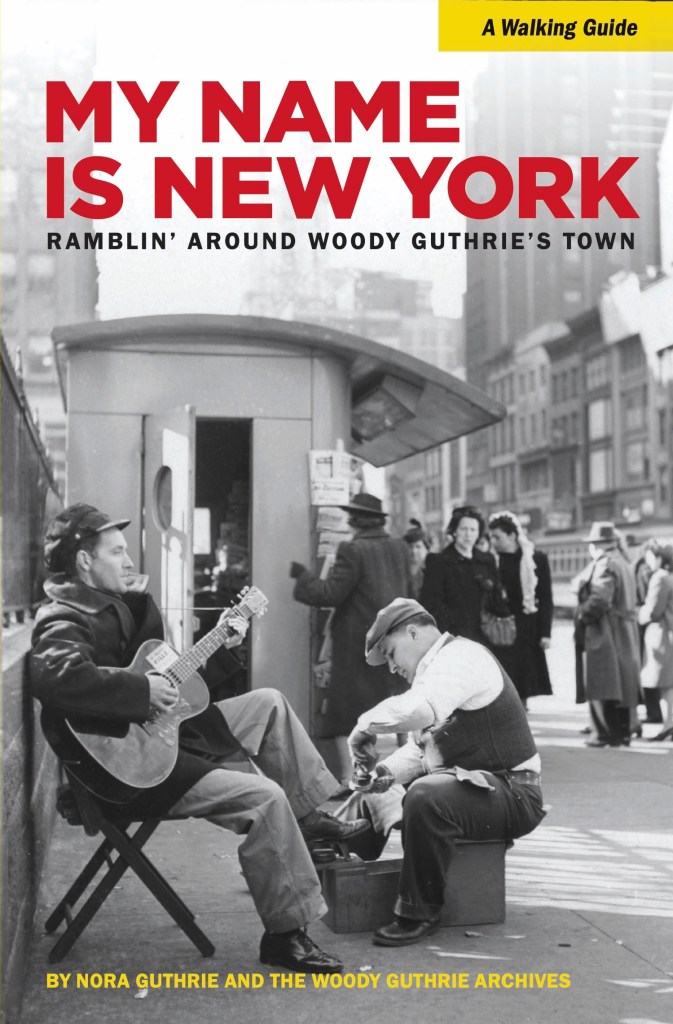To belatedly coincide with the Bob Dylan biopic A Complete Unknown, powerHouse books is republishing its 2012 book My Name is New York by Nora Guthrie, a walking guide to legendary folk singer/songwriter/composer Woody Guthrie’s NYC. Included are 19 landmarks that were home to this ramblin’ narrator of America. The reprint includes a new introduction by Nora (Guthrie’s daughter) as well as a QR code linking to an interactive guide of Guthrie’s life (1912–1967).
The story is illustrated with historical photos, documents and previously unpublished lyrics from the Woody Guthrie Archives. “[W]alk the streets, ride the buses and subways, or sit down and relax on some of the stoops, park benches or beaches where Woody Guthrie did—always strumming away on his guitar, always working on a new song,” notes the publisher.
New York was the adoptive home of this Oklahoma dust bowl native. Many of his most popular songs were written in the flats and lofts downtown and all around “New York Town.” Some of the 600 country, folk and children’s tunes he wrote in the city include “Jesus Christ,” “Vigilante Man,” “Hard Travelin’,” “Tom Joad,” “Reuben James,” “All You Fascists Bound to Lose” and “1913 Massacre.” Most surprising of all, his classic “This Land is Your Land” was written at a small rooming house on 43rd Street and Sixth Avenue (just a block from the old New York Times building) in 1940, within days of his arrival. With friends Pete Seeger, Lead Belly, Sonny Terry and Brownie McGhee and the Almanac Singers, he was at the center of a new movement introducing and popularizing rural, roots, topical and protest music to urban dwellers.
Guthrie traveled up, down and around the United States and served in the Merchant Marine. He was blacklisted for his communist affiliations by the House on UnAmerican Activities Committee. After the Red Scare peaked (but remained a threat), he was diagnosed with debilitating Huntington’s Disease and in 1954 he and his third wife, Anneke van Kirk, and daughter, moved to the Beach Haven apartment complex owned and operated by the father of the future president—proud segregationist Fred Trump—where he composed the song “Old Man Trump.”
I suppose
Old Man Trump knows
Just how much
Racial Hate
He stirred up
In the bloodpot of human hearts
When he drawed
That color line
Here at his Beach Haven family project
As is condensed in A Complete Unknown, the progression of Huntington’s had taken away Guthrie’s capacity to communicate, and he was a fated to survive 11 years in psychiatric hospitals, first in Morris County, NJ, from 1956–1961; in East Flatbush, Brooklyn, until 1966; and the infamous Creedmoor Psychiatric Center in Queens Village until he died in 1967.
This guidebook recalls better times.
The post The Daily Heller: This American Singer-Songwriter Fought Fascists appeared first on PRINT Magazine.

